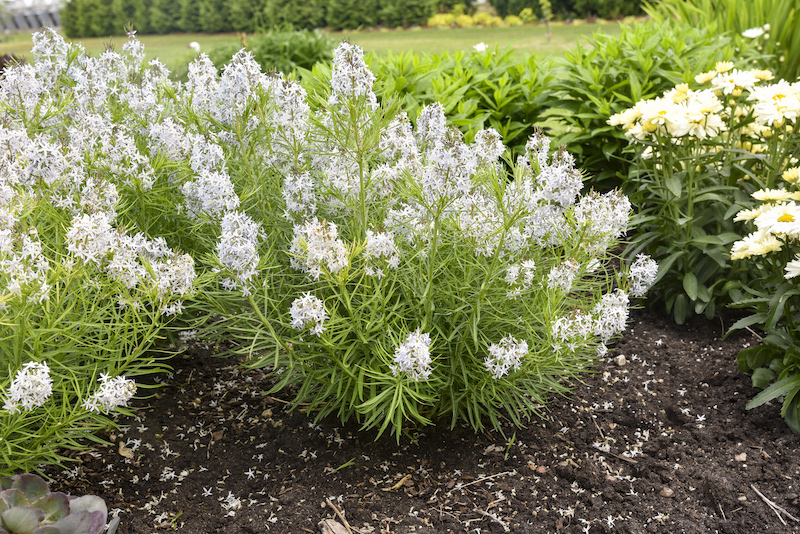Amsonia is a lovely perennial with soft blue flowers early in the summer and a fantastic display of autumn foliage. These perennials complement other late bloomers in the garden such as garden mums and asters, and entice beneficial pollinators and other wildlife. The one animal that Amsonia does not attract is deer, which is great news for gardeners growing in areas of high deer pressure. Amsonia exudes a bitter latex sap that is distasteful to herbivores. Even if a deer has a taste, it is likely to move on and avoid eating more of the plant. Any damage caused by random browsing is quickly filled in by new growth.

Although it is not named on any official lists of deer-resistant plants, Amsonia is considered to be seldom severely damaged by deer browning. The milky latex protects the plant from being more than just nibbled on occasion.
| Rarely Damaged |
| Seldom Severely Damaged |
| Occasionally Severely Damaged |
| Frequently Severely Damaged |
Keeping Deer Away From Amsonia
Because even the new shoots of Amsonia contain latex sap and are so distasteful to deer, there is little need to protect this plant. Amsonia can be grown as a deterrent, possibly keeping other more susceptible plants from being browsed by deer. Because this perennial is relatively low growing at only 3 feet tall, it would make a striking and effective edging for a large garden bed or border for a woodland planting to help deter deer.
Will Amsonia Come Back After Deer Eat Them?
Amsonia is an herbaceous perennial that regrows every spring from the base of the plant. Even if there is damage from deer late in the summer or fall, new growth will emerge as usual the following season. Make sure to cut back any stems that have been browsed. Damaged plant tissue can attract pests and diseases.
 |
Author Robbin Small - Published 6-07-2023 |
